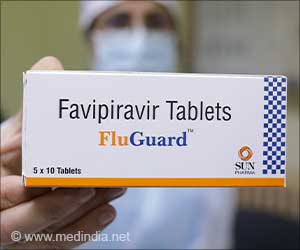- Mechanical sutures and staples are most widely used for closure of surgical wounds but are invasive in nature
- Current chemical and tissue bio-adhesives too have certain limitations
- Study finds sticky substance secreted by the mussel a superior tissue bonding material with reduced scar formation
Mussel Protein As The New Surgical Glue
The mussel is a mollusc that occurs in both seawater, as well as fresh water habitats. It secretes a sticky substance that enables it to attach itself to underwater surfaces. Inspired by such wonders of nature, a team of scientists in Korea have created a light-activated, mussel protein-based bioadhesive (LAMBA) and tested it on rats. Mussel Protein as New Surgical Glue – Methods and Findings of the Study- They tested it on rats with deep 8 mm wide wounds by spreading the glue on the wound and covering it with plastic film.
- The control group of rats had their wounds covered with only plastic film but no glue was applied.
- By day 11, the wound was closed in 99 percent of the test rats in comparison to 78 percent of the control rats.
- All the test rats recovered completely by Day 28 with no visible evidence of scarring.
- The control rats, on the other hand, had large and visible purple scars.
“If this can be replicated in humans, it might be the next big thing for scar therapy,” says Allison Cowin at the University of South Australia, who wasn’t involved in the study.
How Was LAMBA Created?
Earlier research using mussel derived adhesives were produced by recombinant technology using mussel adhesive proteins (MAPs). This was done by modifying l-3,4-dihydroxyphenylalanine (DOPA), a substance critical to the mussel adhesive property.
The current study was inspired by the observation that tyrosine residues in mussel adhesive proteins (MAPs) undergo oxidation and couple to form dityrosine links which enhance structural stability and improve adhesiveness in the form of hydrogel.
How Is LAMBA Superior To Current Surgical Adhesives?
The need for surgical adhesives that cause minimal tissue damage gave rise to tissue adhesives - both chemical, as well as biological adhesives. Nevertheless, these adhesives are also limited in their efficacy. Chemical adhesives, such as cyanoacrylates are associated with toxic reactions and biological adhesives are not strong enough.
Also, most surgical glues do not hold fast in a wet environment, which is essential for medical applications.
The mussel protein derived surgical glue overcomes these drawbacks and is non-toxic, sticks almost instantly in wet conditions and is easy to handle, making it a preferred option for a wide range of medical applications.
The Decorin and Mussel Protein Combination To Minimize Scar Formation Scars occur when the normal arrangement of collagen bundles is disturbed. When the wound heals, the collagen fibers grow back in parallel arrangement instead of the normal cross-linked basket weave arrangement resulting in thick unsightly scars.
One way to reduce scar formation is to use decorin, a skin protein involved in collagen organization. However, decorin is difficult to synthesize due to its complex physical structure.
To counter these difficulties, the research team created a simplified version of decorin and combined it with the mussel gloop derived LAMBA. The resulting combination demonstrated the properties of both better adhesiveness as well as minimal scar formation.
"LAMBA opens numerous doors for medical practices ranging from blocking air leaks and sutureless wound closures of delicate organs or tissues beyond surgeons' reach, to hemostatic agent and drug delivery medium, just to name a few," commented Dr. Cha, a corresponding author of this study.
References:
- Eun Young Jeona, Bong-Hyuk Choia, Dooyup Junga, Byeong Hee Hwangb, Hyung Joon Chaa. Natural healing-inspired collagen-targeting surgical protein glue for accelerated scarless skin regeneration. (2017) Biomaterials https://doi.org/10.1016/j.biomaterials.2017.04.041











